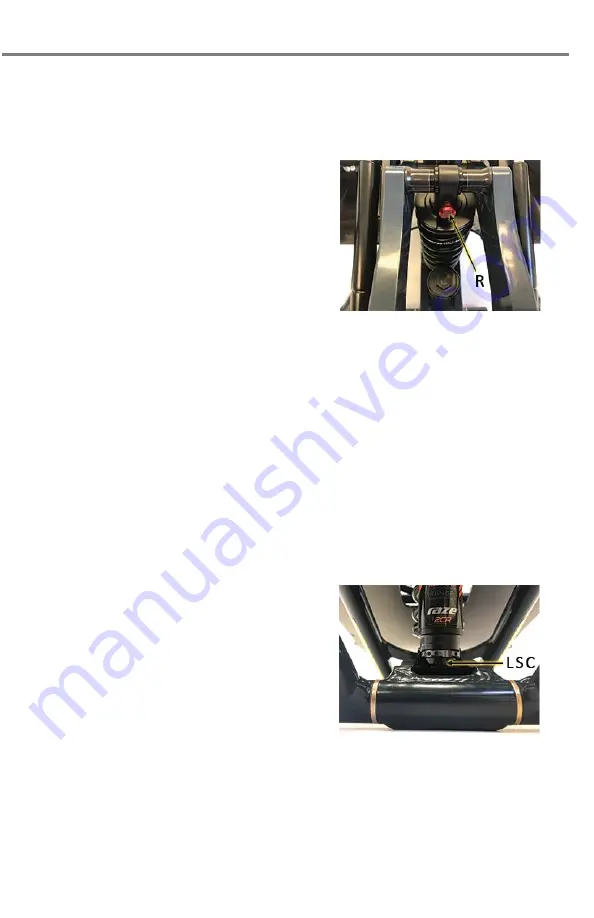
DYNAMIQUE
[23]
each skier will see. Rebound and low speed can later be used to tune out
wallowing or harshness that comes from the HSC setting.
Step 3)
With the rebound set to mid-range, adjust
as necessary.
Rebound (R) controls the speed at which the
shock will return to the sag position. When
the rebound is properly set, the ski will keep
traction with the snow without “pogoing”
the skier following impacts.
If the ski is returning too fast, turn the adjuster clockwise to slow
the shock’s return.
If the ski is returning too slow, turn the adjuster counter clockwise
to speed up the shock’s return.
Lighter and beginner skiers will run slower rebound than heavier
and aggressive skiers.
If the shock is returning too slow and not returning to the sag position after
every impact, less spring is available for the next impact. This is known as
“packing” and can give the impression the shock is too soft. It is often
mistaken for running too little low speed compression.
Step 4)
Where high speed compression is for quick
impacts, low speed compression (LSC)
controls resistance for slower movements. It
plays a major role in the stability of the ski
and overall how stiff or soft it feels.
To make the suspension stiffer and more supportive, turn the
adjuster clockwise.
To make the suspension softer, turn the adjuster counter clockwise.
Lighter and beginner skiers will run softer low speed compression
than heavier and aggressive skiers.
Summary of Contents for Dynamique Biski
Page 1: ......
Page 44: ... 44 ...
















































